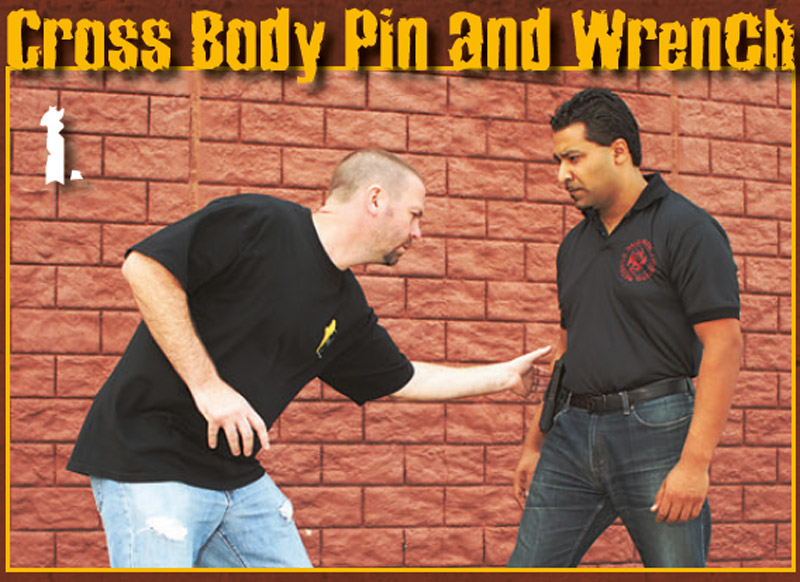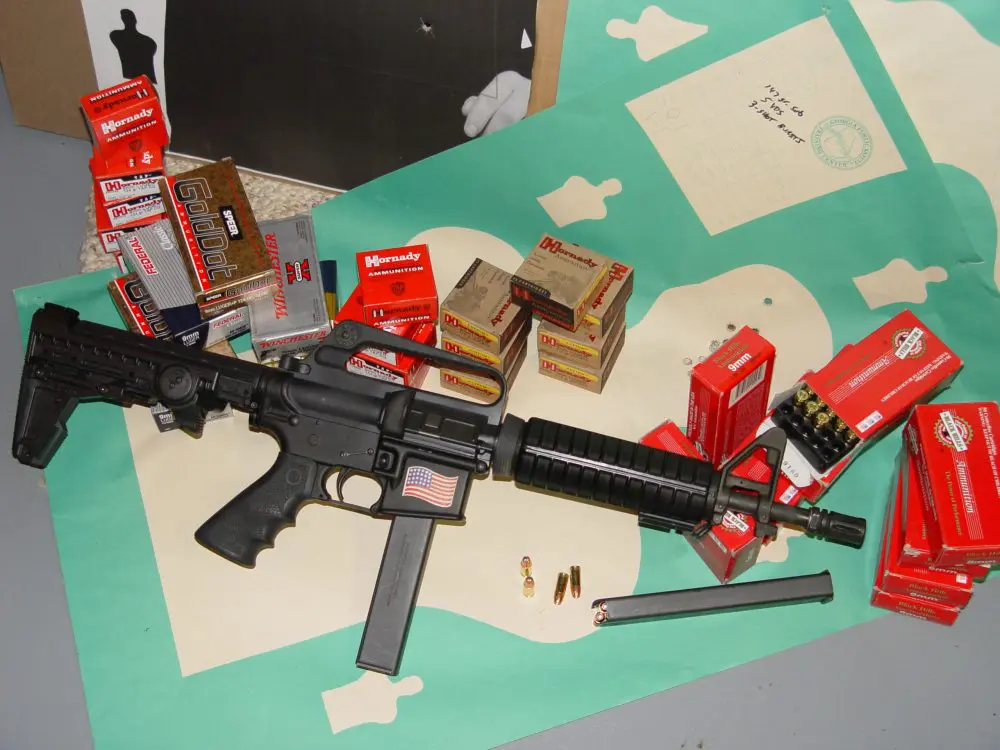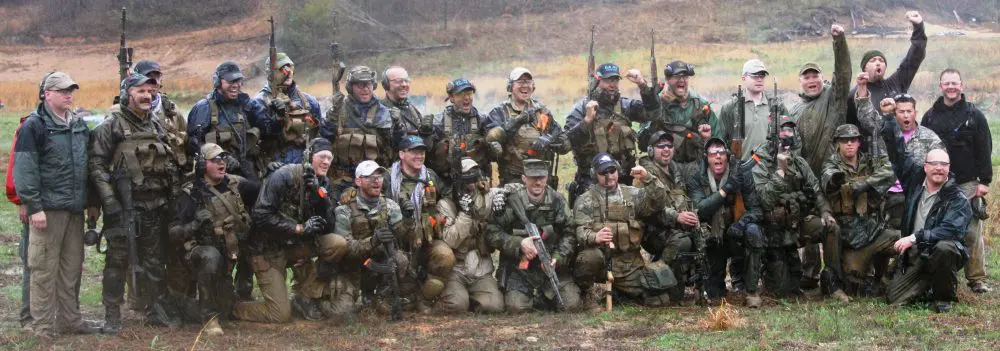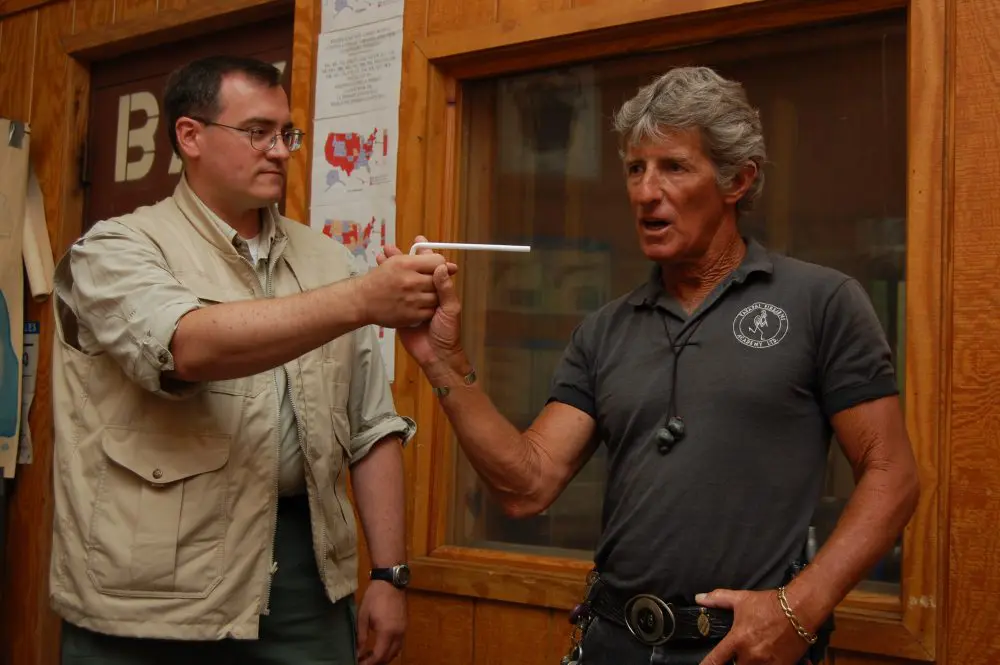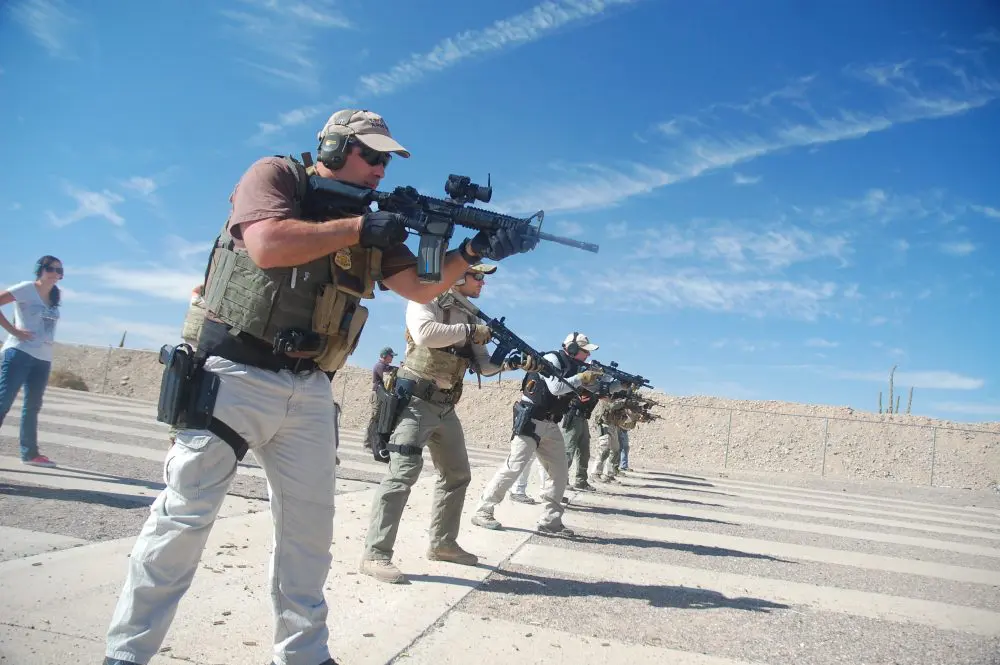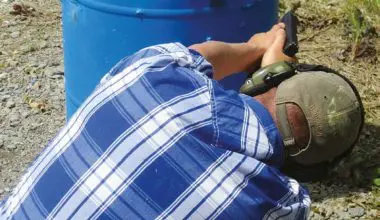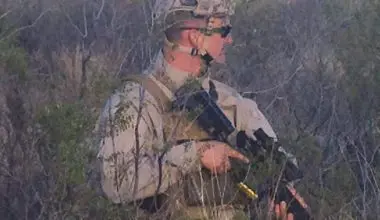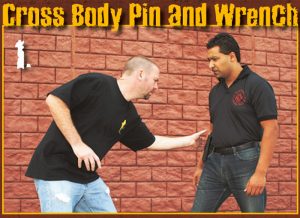
“10-00,” a mere set of numbers with a chilling message that makes every law enforcement officer cringe: “Officer down!”
Statistics show that almost 30% of police officers shot in the line of duty are shot with their own firearm, and nearly 10% percent of police officers killed in the line of duty are killed with their own weapon. Ask any officer and they will tell you that one of the most horrifying situations in law enforcement is when a criminal is able to take a sidearm away from an officer. Not only is the subject dangerous and desperate, but now he is armed.
As for private citizens, pistol retention should be addressed as more
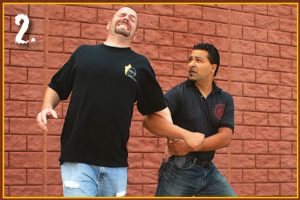
states pass concealed carry laws. And if departments across the country have recognized this issue, but few citizens take it into consideration, then it’s fair to say that the statistics of attackers using a citizen’s own firearm against them will rise as well.
Popular tactical firearm training courses for private citizens are available, but very few teach the skills needed for pistol retention. Many courses focus instead on high-speed tactics such as drawing from the holster, multiple target engagement, shooting on the move, etc. All of this leaves us with a responsibility to train and educate ourselves as opposed to relying on pure luck and holsters with mechanical fail-safes.
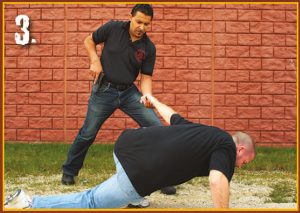
Table of Contents
TWO COMMON RETENTION TACTICS
Two common tactics that are taught in almost every law enforcement agency’s defensive tactics curriculum are the “step and drag” and “pin and turn.” The step and drag teaches the officer to secure the attacker’s hand against his holster and step rearward to gain distance.
The “pin and turn” teaches the officer to secure the assailant’s hand against the holster and pivot to the weak side with force in an effort to apply a wristlocktype maneuver.
Unfortunately, both tactics have proven to fail under application for various reasons. One reason is that the technique hasn’t accounted for
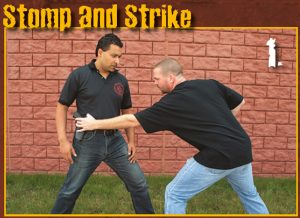
continual incoming pressure from the attacker. Another is that the technique hasn’t positioned the officer to evade the line of attack. The end result usually yields an officer trying to fight off an attacker as he is getting tackled. This simply tells us to rethink our training.
Let’s take a logical approach to pistol retention tactics by identifying what we know and what we need to discover. The influencing factors of any technique are mindset, objective and tactic. If we apply this breakdown to our training, we can then see what is working for us and what’s not.
MINDSET
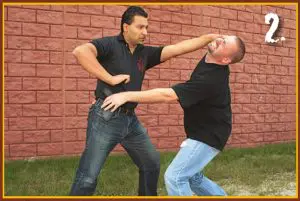
Mindset asks one simple question: ”Are we being proactive or reactive?”
If we are being proactive, we respond offensively. If we are being reactive, we respond defensively. The failure of standard techniques is that they have a defensive mindset that leaves us constantly chasing the offender’s attack. But if we go on the offensive right away, our first response will place us ahead of the attack. Inherently, our tactics need to supersede the aggressive actions of the attacker. The old adage, “You can only beat violence with superior violence” applies here.
OBJECTIVE
Objective asks another simple question: ”What do we want our result to be?”
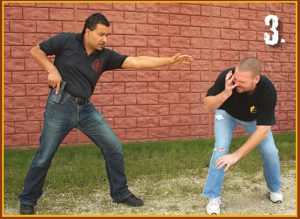
I break the objectives of pistol retention down to three main components:
- Preventing the subject from acquiring our firearm.
- Minimizing opportunity for a continual struggle.
- Gaining distance to establish a point of dominance as fast as possible.
TACTIC/TECHNIQUE
The final aspect to consider is the actual tactic or technique itself. Any good tactic results in the attacker changing their focus from the initial motive of attack to immediate self-preservation. To do this, we must evade, change and control the line of attack, inflict a rapid and intense shot of pain, and then capitalize on the moment of retreat.
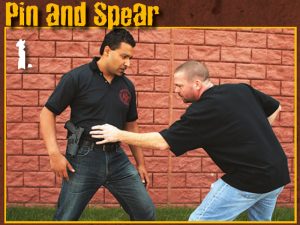
Here are a few basic techniques that match our mindset and objective demands. No matter what the technique is, we always evade the line of attack, control/secure the grabbing hand, and inflict pain right away. Each technique will bring you to the point of dominance immediately. From there you have to decide the appropriate follow-up.
CROSS BODY PIN AND WRENCH
The first tactic I teach in pistol retention is the Cross Body Pin and Wrench. This technique is a great option for frontal attacks, and is shown on page 66.
As the attacker steps in and makes contact with our weapon, we step laterally to the strong side as we underhand grab/ pin their wrist. Once we’ve established contact, we pivot inward using our strong-side inner elbow to strike against the attacker’s tricep. This motion causes an isometric tension in which we are wrenching his elbow.
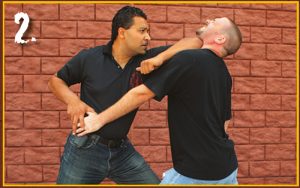
Using the cross body pin leaves the strong-side arm in a position to also strike vital targets such as the eyes, throat, or groin, along with giving us an arm to prevent takedowns in case we need it. Arm wrenching produces an extreme and acute pain that forces the hand to open and all other motions to momentarily stop. The farther you step laterally after pinning the hand, the straighter the subject’s arm gets, making the wrench more devastating. The modified version of this technique lets us pin using the strong arm and reach under-handed for the tricep with the weak-side arm to apply the wrench. This, however, leaves us a bit more susceptible to takedowns.
STOMP AND STRIKE
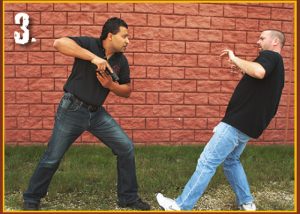
The second technique I teach, shown on page 67, is called the Stomp and Strike. In this tactic, we use the heel of our strong-side palm to stomp the subject’s fingers or wrist, causing immediate sprain or breakage. At the same time, we use our weak-side hand to apply intensified striking such as eye gouges, throat strikes, and elbow strikes. Should you choose, you can use low-line attacks such as knee strikes to the groin and oblique kicks to the shin or knee.
By attacking vital areas such as the eyes, throat, groin and shin, you cause a temporary systemic retreat. This retreat causes the major muscle groups to contract and freeze as the brain processes the pain. These are also targets that cannot be conditioned to receive trauma, making the results of our strikes reliable and consistent despite size, speed, strength or chemical influence.
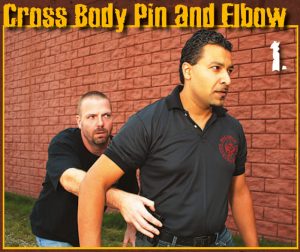
PIN AND SPEAR
The Pin and Spear is shown on this page. Here we simply squat down as we use the heel of our strong-side palm to pin the attacker’s hand. A modified version utilizes the tip of our elbow to strike the radial nerve cluster in the top of the attacker’s wrist and forearm.
After we pin the hand, we use our weak-side elbow as a spear to make an aggressive step forward, driving the elbow into the neck, throat, collarbone or breast plate. The spearing action causes a temporary systemic retreat and rearward momentum, which results in gained distance. From there you can establish the superior position.
CROSS BODY PIN AND ELBOW
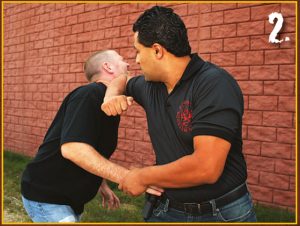
In our fourth technique, shown on the opposite page, we address the rear attack. Here we utilize the cross body pin as we did in the first technique. We follow the pin by pivoting to the strong side while driving our elbow to the subject’s temple, jaw or even forearm. It is critical to turn to the strong side because of the ending position. If you turn to the weak side, you will be standing square to the attacker, but by turning to the strong side, you will be outside of their framework. This prevents a continual struggle, takedown or striking, placing you in a position from which you can immediately go on the offensive if needed.
RECOMMENDATIONS
The common denominators in all of these tactics are easily identified. The factors that make them effective are the instant shot of pain we cause and our attention to the ending position. By choosing to be on the offensive immediately, influencing the line of attack and positioning ourselves to have a strategic advantage, we reduce the possibility of a continued struggle or takedown. These simple adjustments result in a higher success rate of retaining our weapons.
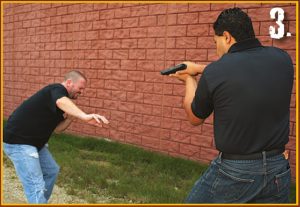
Let’s also recognize that awareness leads to prevention. If we can employ the simple things that drastically reduce the chances of someone even trying to grab our firearm, this will obviously be best. Keeping our body bladed while speaking to someone so the firearm isn’t exposed, having multiple points of restraint while transporting a prisoner so they cannot reach out, and having at least one other person present are always excellent deterrents. We should be aware of our actions in every situation. However, in this article we are assuming that those options were not viable and the subject has made aggressive action toward our firearm.
No matter which of these techniques you utilize, my recommendation is to always step back, draw your firearm and assess the situation. The attacker has escalated the confrontation by attempting to grab your weapon, and before you further engage, you must identify other potential threats and hazards.
If you choose not to employ any of the techniques outlined here, I urge you to find ways to inflict pain right away—it will make any technique you use much more effective and successful. A quick shot of pain to the vital targets will put you ahead of the game and can make all the difference in the world. I have a saying: ”Giving a cheap shot to his eyes is better than getting a gunshot to my chest!”
Finally, I suggest that you train, train, train! It takes thousands of repetitions to master any technique. Put the flight time in and program your responses so you don’t have to think about them!
